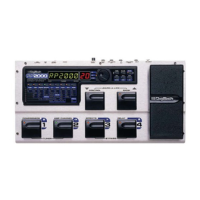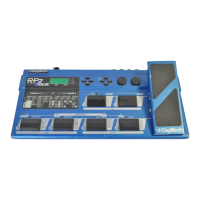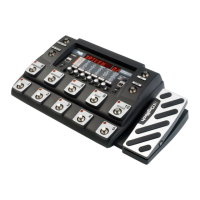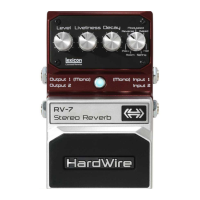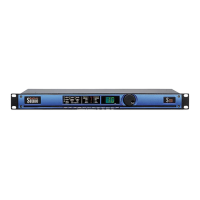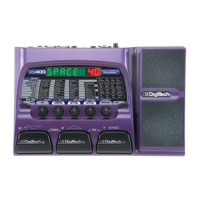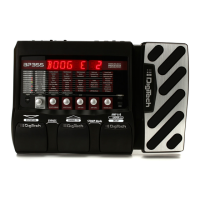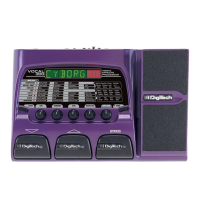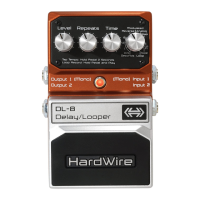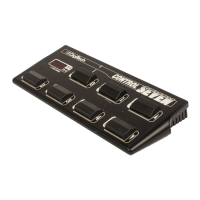Do you have a question about the DigiTech RP-1 and is the answer not in the manual?
| Brand | DigiTech |
|---|---|
| Model | RP-1 |
| Category | Recording Equipment |
| Language | English |
Connect audio input/output cables and route the power cord away from audio lines to prevent interference.
Adjust RP-1 input level for optimal headroom and set the output level to the desired volume.
Choose a Speaker Simulator program to match your guitar system for optimal sound.
Use program buttons to select presets; store custom sounds in user-programmable locations.
Guide to the RP-1's four operating modes: Performance, Edit, Title, and Utility.
Protects the RP-1 from voltage fluctuations, spikes, and surges from AC line conditions.
Details the functions of each jack on the RP-1's back panel, including audio and MIDI I/O.
Illustrates various diagrams showing how to connect the RP-1 for MIDI and audio signal flow.
Describes the functions of the foot controller panel, including switches and control panel buttons.
Explains the RP-1's menu architecture and operational modes, starting with Performance Mode.
Details two methods for selecting different sounds (Patches) using control panel buttons or the foot controller.
Procedure for switching between different arrangements of Patches assigned to footswitches.
Defines Patches as sound creation palettes, containing effects configuration, parameters, and titles.
Explains algorithms as effects chain lists, detailing the 11 available configurations.
Describes how to select and change the effects chain (algorithm) for a Patch.
Lists and describes all available effects and their adjustable parameters.
Guides users on customizing sounds by adjusting parameters of existing Patches.
Explains how to assign custom names (up to 16 characters) to user-created Patches.
Allows comparison of edited sound with the original without losing settings.
Procedure to save modified presets into memory locations for later recall.
Accesses various setup and configuration menus via the UTILITY button.
Selects factory or user-programmable speaker simulator programs to optimize sound.
Allows creation and customization of user speaker simulator programs using a graphic equalizer.
Central control for RP-1's interaction with MIDI devices, including mapping and data dumps.
Assigns custom names and controls to external MIDI devices via Program Changes.
Determines if Program Changes are sent when scrolling through Patches using front panel buttons.
Configures how the RP-1 responds to and sends MIDI Continuous Controller messages.
Backs up or copies RP-1 memory contents via the MIDI port.
Sends individual Programs to another device, optionally with a different program number.
Configures footswitch modes, assigns Programs to switches, and defines Sets.
Details how to assign Program numbers to specific footswitch patches within Sets.
Allows reversing the indicator status of footswitch LEDs for low-light visibility.
Resets all user-programmed data and returns the RP-1 to its original factory condition.
Lists the 11 available algorithms (effect configurations) for the RP-1, detailing included effects.
Provides blank sheets for users to photocopy and record their custom program parameters.
A comprehensive list of factory patch numbers and their associated titles available on the RP-1.
Details MIDI functions transmitted and recognized by the RP-1, including channel, mode, and note data.
Explains the DOD/DigiTech System Exclusive Format for data transfer and control of signal processing devices.
